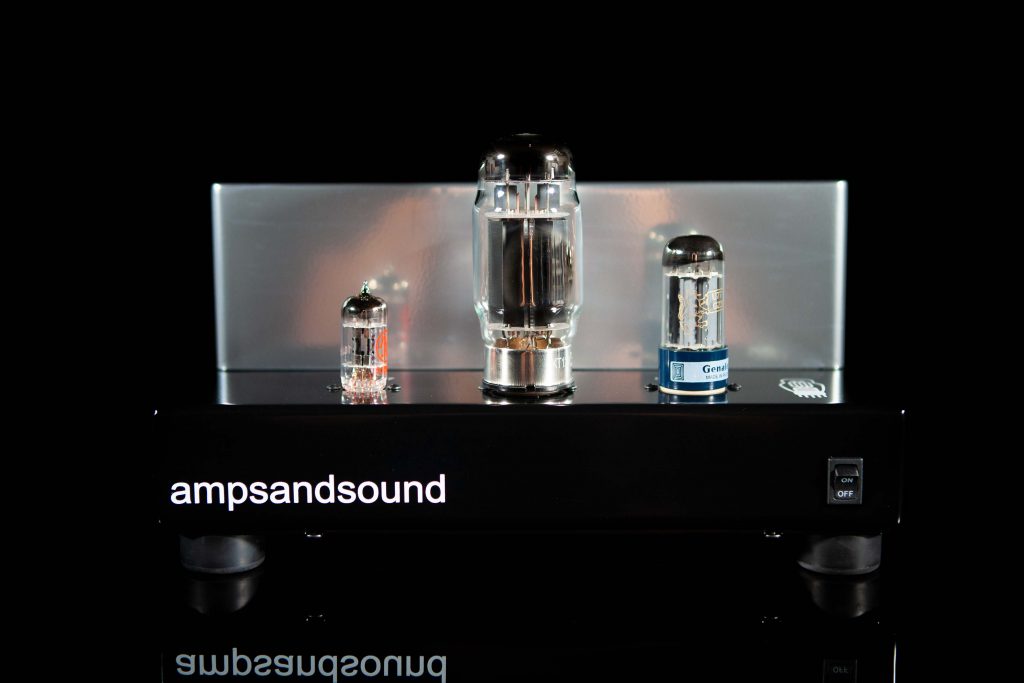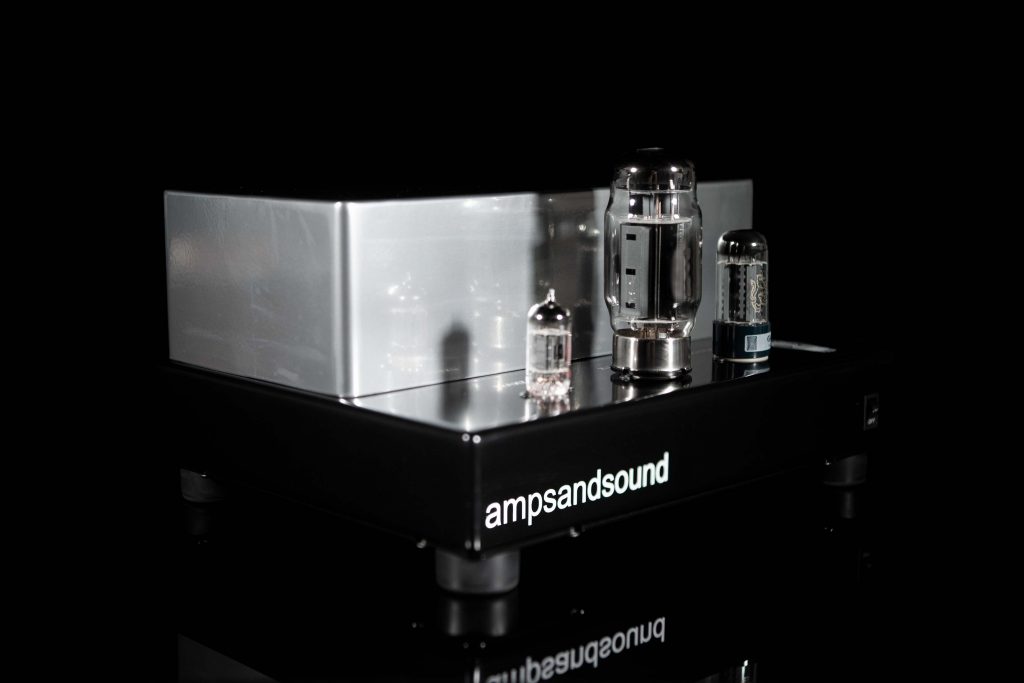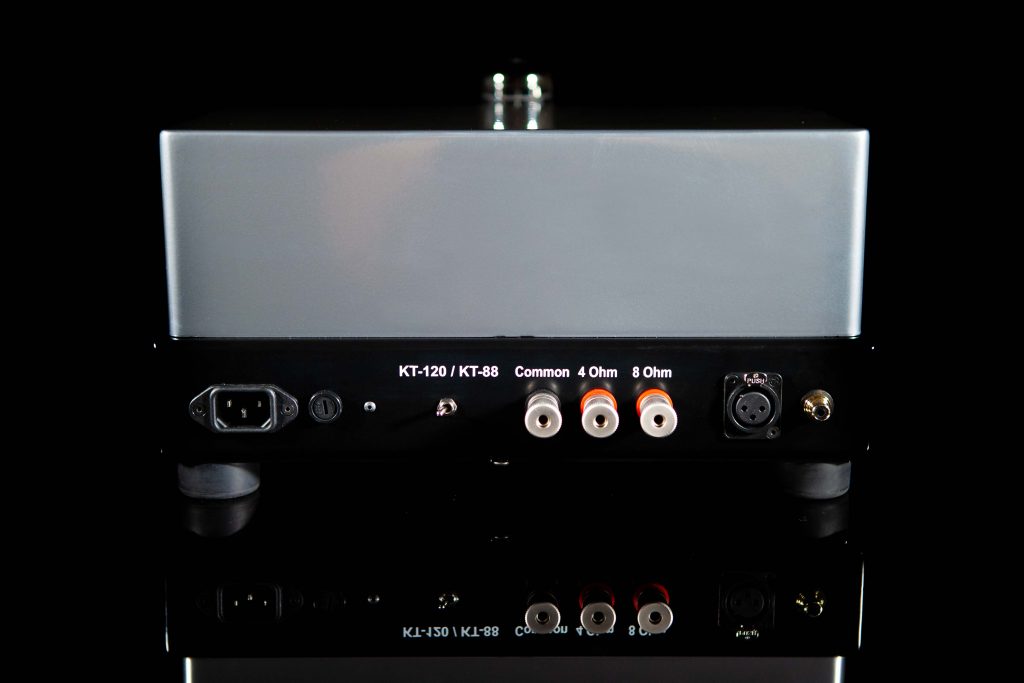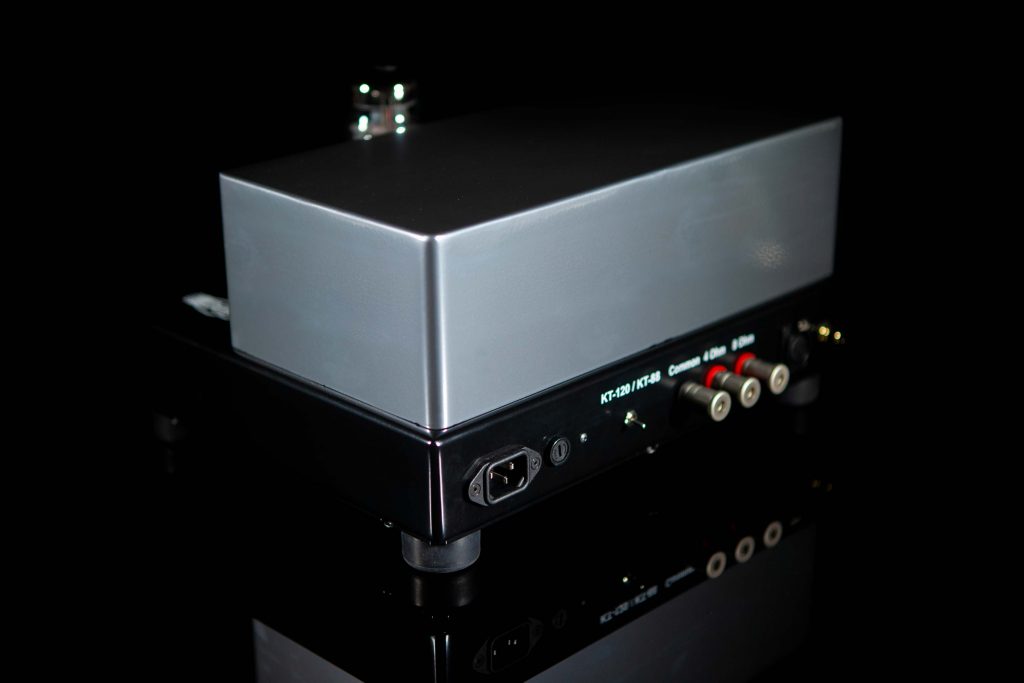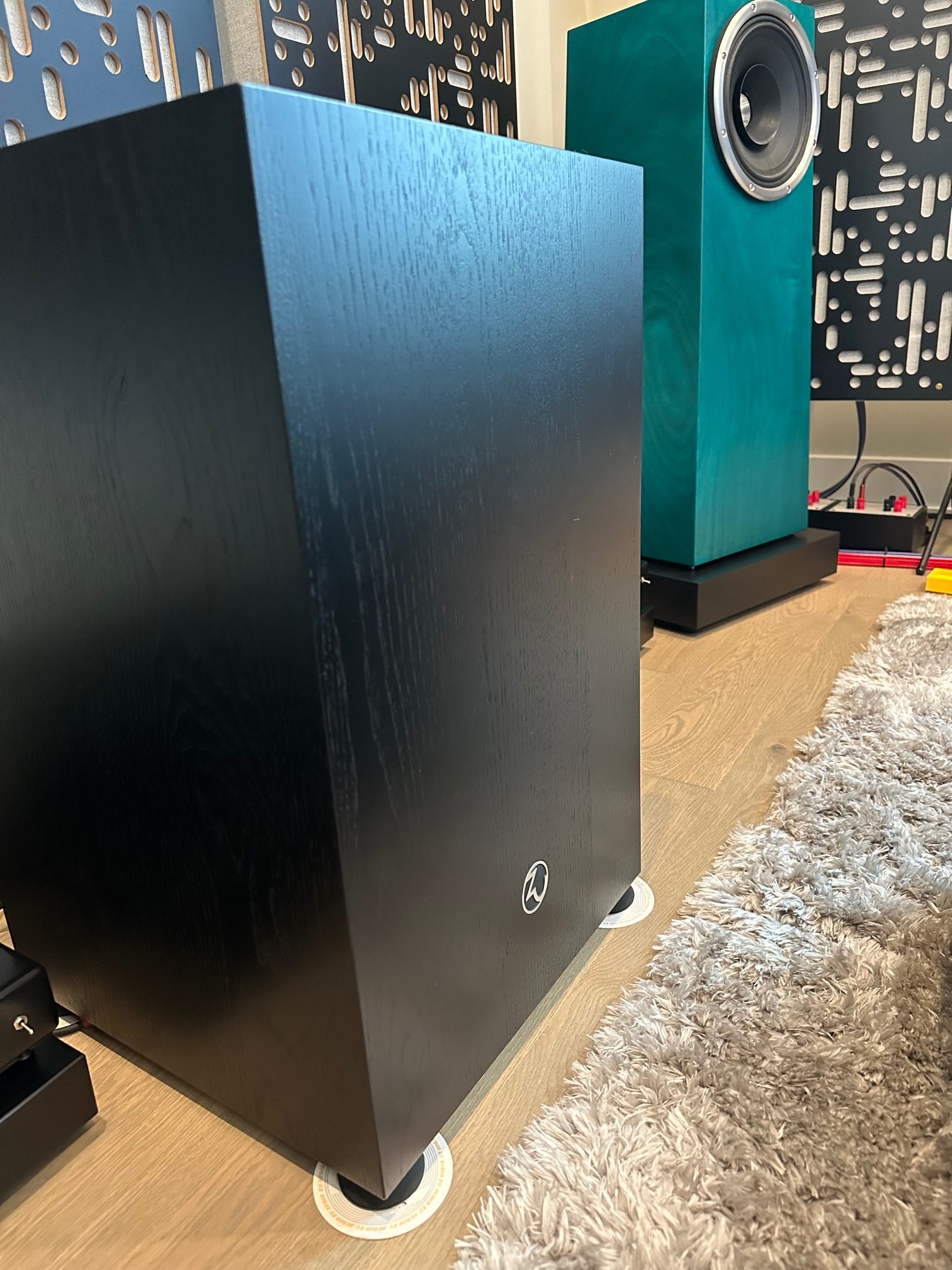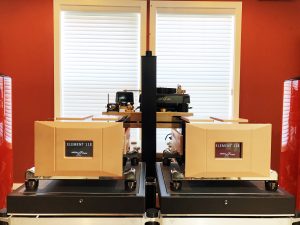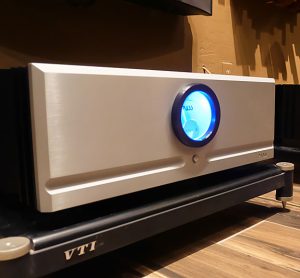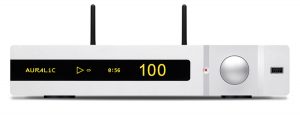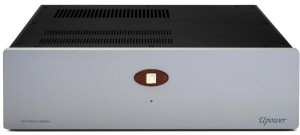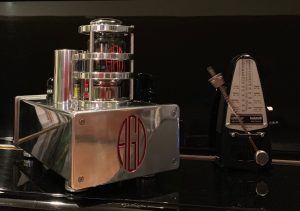Justin Weber, the owner of ampsandsound, has been on a roll lately. 2021 has been a big year for him. He introduced two new headphone amplifiers (The Rockwell, and the Agartha), had two of his products put on the 2021 Stereophile recommended component list, and introduced a new set of mono block speaker amplifiers known as the Bryce Monos. In today's review, we are going to talk about the Bryce Monos, which are in my opinion, the ultimate expression of Justin's single-ended work.
Introduction
In the headphone world, ampsandsound has built a niche as a high performance tube amp manufacturer. Its products, like the Bigger Ben and the Kenzie, are well known quantities in high end headphone circles. However, ampsandsound'S best kept secret is its speaker amps. Justin started out building speaker amps, and two channel HiFi is his personal passion. This is why many of his headphone amps come with binding posts on the back.
Sometimes not being known for something gives you creative freedom, and that is exactly how the Bryce Monos were born. After completing the Nautilus, Justin wanted to go back to the drawing board, but this time he wanted to design specifically for speakers. He started with the circuit in the Nautilus, but ultimately wanted to extract as much power as reasonably possible from a single output tube. To do so the circuit went through several iterations, including switching the output tubes from being cathode biased to a fixed bias resistor. This, and several smaller changes, took the team at ampsandsound almost a year to perfect. The results are incredibly impressive, achieving a conservative 12-watts of single-ended bliss, with a flat frequency response from about 6Hz to 45kHz at 1-watt. I will also tell you, these are the most powerful 12-watt amplifiers you will likely ever hear, bringing earth shattering bass and crazy dynamics to my, or any room, with the right speakers.
Looking at the Bryce Monos, one could be forgiven for calling them "cute." They are shockingly small when you see them, however, be careful when you go to lift them. At 13" x 10" x 7" and 50+ pounds, these little amps are dense. This density comes from both the transformers used and the case work. Like the Nautilus and the Zions, the Byrce are made from rolled steel chassis that are finished in black with matte silver transformer covers. The transformers like everything else Justin does are over spec'd, and designed to handle up to 20-watts. The power supply is massive, and a combination of a large amount of capacitance and a reasonable sized choke keep these amps extremely quiet. When you put all these things together, you will start to realize where all that weight comes from. In the world of single-ended output (SET) amplifiers, while weight is not everything, it is a major indicator of performance.
The Bryce Monos are single-ended, extremely low, triode strapped tube amplifiers. What this means is that there is only one output tube per channel, and an incredibly small amount of feedback is taken to to deliver that incredible 6Hz to 45kHz bandwidth.
The output tubes are run in triode mode. While running the tube in super linear or pentode mode can deliver more power, it does so with a loss of the holographic mid-range that ampsandsound is known for. The goal of the Byrce Monos is not to amaze you with their technical performance, even though they will, but instead to connect with you emotionally.
Each Bryce Mono takes three tubes. A 12AX7, or variant of, a KT88 or a KT120, and a 5AR4 or 5U4. On the front of the amp is the ampsandsound logo and a power switch, rotating the amp around you will find RCA inputs, a XLR input, IEC power input, fuse housing, and a bias switch for switching between KT120s or a KT88s. The XLR input uses an input transformer to convert the incoming balanced signal to single-ended. The input transformers Justin uses are incredibly transparent and allow the amplifier to isolate its ground from the rest of your system. The result is darker backgrounds and deeper bass, the tradeoff is a slight reduction in detail. If you do not want to make that tradeoff, the RCA input does not use the input transformer. The speaker binding posts have two choices, a 4 ohm output and an 8 ohm output.
Taking off the bottom cover of the Bryce Monos, you are greeted with a point to point and turret board construction. Justin and the ampsandsound team take pride in their wiring work. I will say his amps, including the Bryce, have the best wiring I have ever seen on any purchasable product, and is unheard of at his price point. This amplifier looks like it was built in the 60s. Every wire is laid by the hand of an incredibly skilled technician, each resistor, capacitor, and tube socket is carefully placed, attached to the chassis, and soldered to the appropriate lead. All cables are braided, and care has been taken when laying out the inside of the chassis to ensure low noise operation. The construction uses parts that, while expensive, can be purchased today, and likely 50 years into the future, ensuring that the Bryce Monos will deliver years of enjoyment.
ampsandsound prizes simplicity and serviceability above all else. This means that voltage regulators, auto shutoff and warmup circuits, and other niceties are not built into their products. The philosophy is that the proper habits can be taught, and by omitting these other complexities, not only does the amp ultimately sound better, but on top of that it will be serviceable today and anytime in the future. This does mean, like a super car, that you have to be mindful of what you are doing when using the Bryce Monos.
For example, it is important that after you turn the Bryce off, you let it sit for at least 10 minutes, preferably 30, before turning it back on. Failure to do so can result in blowing your rectifier tube. Similarly, you must select the right tube type on the back of the amp. Placing a KT120 into the Bryce, when it is set for KT88s will result in a lackluster performance. On the other hand placing a KT88 in the amp when biased for a KT120 can result in a light show that ends with a dead tube (luckily no tubes were harmed in the making of this review).
Justin built the Bryce Monos specifically around the KT120. His argument was that when biased properly it is an incredible performer. It is open, detailed, and provides a reference level foundation to build your musical stage on top of. We will talk about this more when we get to the listening portion of this review, but I have to agree with him. The KT120 really delivered in this amplifier, which both shocked and delighted me.
The following components were used for my review:
- Power Conditioning: PS Audio P12
- Amplifier: Bryce Monos, Nautilus, Emotiva XPA-1L Mono blocks
- Source: DCS Rossini, Chord Dave
- Speakers: Cornscala, Gallo Ref 3.1
- Cabling: WyWires Platinum Interconnects
- All components in the system had a minimum of 200 hours of burn in before this review was written.
Setting Up and Initial Impressions
After nearly throwing my back out lifting the Byrce Monos out of their lovely Seahorse cases, I placed them onto my rack, and connected them with my WyWires Platinum RCA cables directly to my DCS Rossini.
From there I placed my initial tube complement into them, a pair of NOS RCA Command Series 5751s (12AX7 equivalent with less gain), the supplied KT120s, and NOS Mullard 5AR4s. Before I continue the review I want to point out one very important thing. I love vintage vacuum tubes. I collect them. While I reviewed this amp with NOS input tubes and NOS rectifiers, they are not necessary to enjoy this amplifier. My suggestion to future owners of this product is simply enjoy the amp in its stock form for at least 60 days before considering other tube options. You may find that there is no need to go hunting.
Flipping both amps on, I saw the filaments begin to glow. I put my head directly into my speakers tweeter horn and I heard nothing, dead silent. After letting the amps warmup for about 10 minutes, I come back, queue up Mika's "Tomorrow," and press play.
The first thing I noticed, especially in comparison to my Nautilus, was the bass response of the Bryce Monos. It was as if someone gave my speaker a swift kick. I was shocked that a single-ended tube amp could have bass response like this. It was well formed, deep, textured, and detailed. It was not overblown or overdone, it was simply right. The only way to get bass response near this level in my experience was to use higher powered solid-state amps like my XPA-1Ls (one of the best deals in speaker amplification that ever existed). At 94dB/W my horn loaded speakers are efficient, but still require some driving force. What I heard sounded to me like way more then 12-watts. Everything sounded massive, bass lines were rendered with a shocking level of realism, and it seemed like there was no end to the headroom that these amps were providing in my small room.
This bass response was partially due to the KT120, but was primarily due to the fixed bias nature of the amplifier. In tube amp design there is a debate over whether fixed bias designs or cathode bias designs are better. Fixed bias will almost always produce better bass, but it may make the amp less dynamic and airy. The Bryce Monos though had it all, great bass and airy and extended highs. Whether it was Alanis Morissette or Mika, trumpets or cymbals, these amps simply delivered in extensions and airiness.
Like ampsandsound's other single-ended amps the Bryce Monos have a reference midrange. Voices appear to float in the center of my listening room. It draws you in with a texture that makes you want to reach out and touch the invisible person singing in the center of your room. Closing your eyes, you can begin to make out the movements of the singers jaw. This is not an overload of detail, but simply the Bryce's ability to render an incredibly high resolution experience. This is particularly apparent on The Mountain Goats, Jordan Lake Sessions album. As John Darnielle belts out the word to "This Year" you can feel the emotional toll the year has taken on him, as well as the rest of the band. You can also very clearly hear the room he is in. The saxophone remains locked in place, swinging on the stage in a disturbing but shockingly realistic way. I realized I was literally hearing the saxophonist rock back and forth to the beat.
Three hours later, I look down at my notepad and all I have written is "wow." The lack of writing is not because there was nothing to write about, but that every time I went to write something, I was simply drawn back in. As I write this review with the Bryces playing in the background, I am still tempted to simply right "wow" and call it a day. Sadly that would simply not be a very good review…after all what do you as a reader do with "wow."
The Bryce Monos have an incredibly revealing and clear treble. The monos produce a massive amount of detail and render symbols just right. You hear the impact of the stick on the metal, you can hear the air displaced as the cymbal moves. It is really something I never expected to hear, but there it was. At no point did I find the Monos bright or harsh, simply extended and detailed. They are my new reference for what I would call the perfect high frequency rendition. Trumpets and saxophones have just the right bite to them, and there is an immediacy to the entire presentation that demands your attention. Listening to the Bryce Monos is like sitting front stage at a classic rock concert. You are left with no choice but to engage and succumb to the music.
Making the Bryce sweat was an incredible challenge. At normal listening levels I could throw classic rock, jazz, pop, singer/song-writer, classical, big band, and orchestral music at the Bryce and I would get a stunning soundstage that was detailed and rich in tone. At incredibly high volumes (and to be honest volumes I do not personally listen at) the Bryce kept its composure with classic rock, jazz, singer/song-writer, and classical. However, its stage did begin to collapse with big band, pop, and orchestral music. The results at these volumes were still good, but turning the volume knob down resulted in an all-around better presentation. Remember, 12-watts does have its limits and your results will be heavily dependent on the speakers you use and the room you listen in.
Before Justin sent me the Bryce we spent a long time talking about what he was trying to do with them. His goal was to create a reference single-ended design that maximized the power you could get out of a triode strapped tube. His goal was to show people that with smart design, and best in class execution, that a single-ended amp can keep up with the best of the best. I really do think he achieved his goals. The magic of my Nautilus was on full display, but all of the Nautilus's shortcomings when it was used as a speaker amplifier, simply disappeared with the Bryce. This means you got the emotional connection, the urge to toe tap, and the need to pay attention, along with incredibly dynamics, bass, and an extended top end that literally left nothing to be desired. Am I surprised, no I am not, but that is because at this point I have learned that ampsandsound does not over hype its products. I was promised a reference class single-ended amplifier capable of making my speakers roar to life, and that is exactly what I got.
Let's Talk About Tubes
The Bryce Monos use three different tubes; the 12AX7, a KT120 or KT88, and a 5AR4 rectifier.
If one wanted to they could roll in a 5U4G in place of the 5AR4, though I would not recommend that. Not only does it reduce your power, but it takes a tight and well defined bass and injects a reasonable amount of bloom. This bloom is due to the difference in voltage usage between the 5AR4 and 5U4G tubes. To be clear, there is nothing wrong with this sound, and I know some really prefer it, but I think you sacrifice one of the best features of this amp when you make that change. This seemed to be true with SED black plates, U52s, and RCA 5U4Gs, and because of that I just don't see the point in using 5U4Gs with this amp.
For input tubes, you have a ton of choices, both new and old stock. The RCA Command Series 5751s are reasonably well known tubes that provide a holographic mid-range and nice extension on the top and bottom end. These are not the end game in extension, but they worked really well in my room. I also listened with the old production Telefunken 12AX7, and the results were incredibly linear and simply stunning. Finally, I tried some early Mullard 12AX7s, and it brought forward that fabled British tone, thick in the center, but fast on the top and bottom. The fact that each of these tubes imparted a very distinct sound characteristic onto the amp shows that the amp is a good match for someone who likes to roll tubes and really enjoys dialing in the sound of their system.
The thing that surprised me was the output tubes. Again, I like old tubes, and I have the fortune of having a large collection of GEC KT88s and old stock Tung-Sol 6550s. I very much assumed that I would run the KT120s for a little bit, and then swap in an old stock GEC KT88 and call it a day. However that is not what happened. Running the amp in KT88 mode, where it can take either KT88s or 6550s results in an incredibly holographic sound stage. It is as if your back wall does not exist. It is confusing and incredible. However, you lose some of the dynamic punch and linearity that the KT120 brings to the table. While I really enjoyed KT88s and the 6550s in this amp, the KT120 was the big star.
The reason I am so surprised is the KT120 in the Bryce is the first time that I actually enjoyed a modern production tube since I began my journey with tube amps. The KT120 brought a top end that was really special, and a low end that was distinctly solid state in nature. Its mid-range did all of the things that some of the best old stock tubes can do, all while delivering an extra layer of resolution that my old stock KT88s and 6550s could not deliver. Putting new stock JJ KT88s into the Bryce kept most of the properties of the old stock KT88s and added resolution, but the KT120s were my favorite, and my wife's favorite as well. I think this is a really big deal because this means that you can easily purchase new power tubes and you do not have hunt to get the best sound out of this amp. Bravo New Sensor and Justin, this amp and its stock tube combo really delivered.
By the end of this review, my reference tube complement was the RCA 5751 Command Series, KT120s, and a Mullard 5AR4 (though the new stock Tung-sol 5AR4 delivered 98% of the performance for 1/10th the cost). This combo gave incredible clarity, headroom, and tone. It produced a sound that was both extended and fun to listen to.
Speaker Matching
12 watts…we have to remember that number, and while the Bryce Monos sound nothing like any 12 watt amplifier I have ever heard, there are still limits to what they can do. I found the Bryce Monos to be a great match with my 94dB/W efficient Cornscalas. It was only at extreme volumes with very hard source materials that I was able to make the Bryce sweat.
Bringing in my Anthony Gallo Ref 3.1s, which are much harder to drive (I believe 83dB/W), a 4 ohm load, and a load that varies quite a bit (a single-ended tube amplifiers' nightmare) I was shocked by how well the Gallos performed with the Bryce. At moderate listening levels bass, extension, and staging were on par with my Cornscalas. When measuring the room response for Gallos driven both by my XPA-1L and the Bryce I did not see any obvious deviations which was quite impressive. However, turning up the Gallos clearly showed the Bryce's limits, revealing compression at moderate high volumes (which again is to be expected).
If you plan to buy the Bryce, you need to think about your speaker selection. The Bryce is much more forgiving then other single-ended amps, but you still need to have at least 94dB/W efficiency and a stable speaker load. The Bryce will pair incredibly well with the Klipsch Heritage Line, Zu Audio, and Omega just to name a few brands. To say differently, if you have remotely reasonable expectations, the Bryce Monos will blow you away.
Concluding Thoughts
You need to ask yourself why you went into this hobby. Was it so you could have the most technically sophisticated system, or was it to connect with your music at an emotional, physical, and spiritual level? I think many who really love the hobby would say the latter, but still want to know that their equipment measures well. With the Bryce Monos, ampsandsound threaded the needle with a single-ended amp that measures shocking well irrelevant of its topology, and created that special connection that other amplifiers can only dream of.
The only reason not to love these amplifiers is ultimately the limitation that these impose on your speaker choices. You have to buy a high efficiency speaker to get the most out of the Bryce Monos: Zu, Omega, Tekton, and Klipsch are all brands that you should become acquainted with before purchasing these Monos. At their cost, you need to be sure that you are ready to embrace the high efficiency limitation (and even look at it as a positive), or you need to look at a different type of amplifier.
Every person who listened to my system with the Bryce Monos in it left grinning. Many complimented the incredible sound stage, several were blown away by the bass, and all were captivated by the mid-range, tone, and texture of the sound they heard. This is a reference level component and I can simply say that if you hear a pair of them, and can afford the $12,000 price tag, that you will likely buy the pair.
As I packed up the Bryce Monos for their return trip back to Justin I looked at them and muttered "you'll be back". I truly believe they will be one day. Thank you Justin and the ampsandsound team. You delivered again.
Bryce Monos
Retail: $12,000 a pair
ampsandsound




